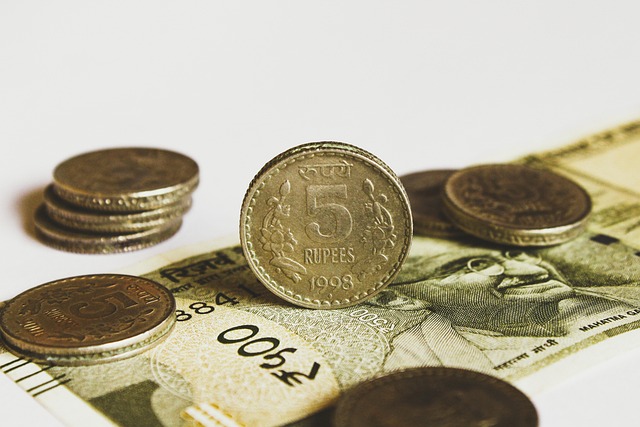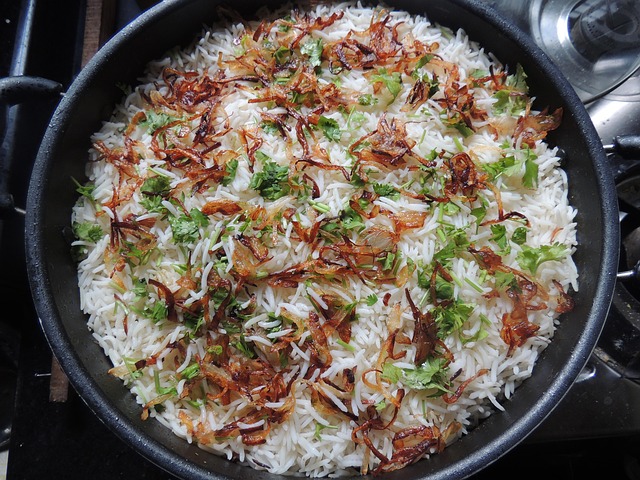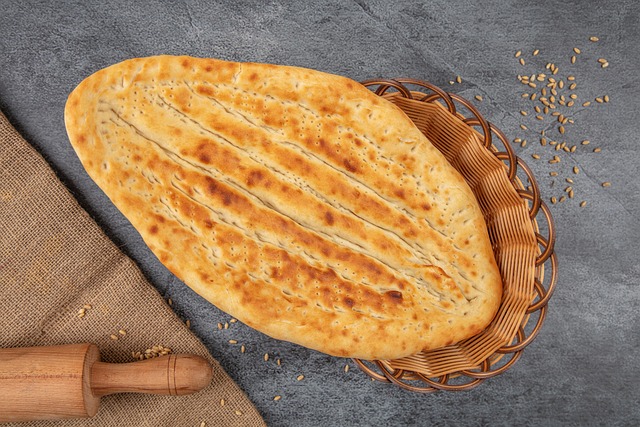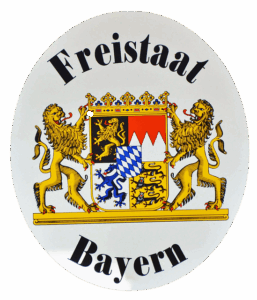Mastering Pakistan’s Monetary Policy: Impact on PKR Strength
Pakistan's Monetary Policy Framework steers the Pakistani Rupee (PKR), addressing fluctuations…….

Pakistan's Monetary Policy Framework steers the Pakistani Rupee (PKR), addressing fluctuations through tools like interest rates, reserve requirements, and open market operations by the State Bank of Pakistan (SBP). Balancing inflation control with fiscal policies is key, while CBP strategies impact PKR stability in global markets. Volatility presents challenges and opportunities, demanding economic reforms, diverse exports, and foreign investment to strengthen the PKR. A stable political climate fosters domestic investment, enhancing PKR resilience.
Pakistan’s monetary policy stands as a cornerstone of its economic stability and growth trajectory, with profound implications for the Pakistani Rupee (PKR). Understanding this intricate web is essential for investors, policymakers, and citizens alike. The current landscape presents both challenges and opportunities, as market dynamics and global economic trends exert pressure on PKR’s value. This comprehensive guide aims to demystify Pakistan’s monetary policy framework, analyze its historical impact on the PKR, and offer insights into potential future trajectories, empowering readers with valuable knowledge in this critical domain.
- Understanding Pakistan's Monetary Policy Framework
- Central Bank's Role in Managing PKR Exchange Rate
- Tools and Strategies for Controlling Inflation
- Impact on Economy and Future Prospects of PKR
Understanding Pakistan's Monetary Policy Framework

Pakistan’s Monetary Policy Framework is a complex yet crucial mechanism designed to steer the country’s economic trajectory, with a primary focus on maintaining stability and growth in the Pakistani Rupee (PKR), the currency-of-pakistan. Understanding this framework requires delving into its historical evolution, as the PKR has navigated significant fluctuations since its inception. Over time, various monetary policies have been implemented to address challenges such as inflation, exchange rate volatility, and fostering fiscal health, all of which impact the rupee’s value.
A key component of Pakistan’s monetary policy is the role of the State Bank of Pakistan (SBP), which acts as the central bank, responsible for managing monetary supply and ensuring the rupee’s integrity. The SBP employs various tools like interest rates, reserve requirements, and open market operations to achieve its objectives. For instance, raising interest rates can temper inflation by making borrowing more expensive, thereby reducing consumer spending and investment. Conversely, lowering rates stimulates economic activity, encouraging lending and potentially boosting remittances-and-rupee flows.
Moreover, Pakistan’s monetary policy is intricately linked to the country’s fiscal health. The relationship between fiscal and monetary policies is critical in maintaining macroeconomic stability. A balanced approach ensures that monetary measures support fiscal objectives, such as managing public debt and promoting sustainable economic growth. This symbiotic relationship directly influences the PKR’s performance in both domestic and international markets. To deepen understanding, visiting us at business-incubation-centers can provide insights into how these policies interact with Pakistan’s diverse economy.
Central Bank's Role in Managing PKR Exchange Rate

The Central Bank of Pakistan plays a pivotal role in managing the country’s monetary policy and maintaining stability in the Pakistani Rupee (PKR) exchange rate. Its primary mandate is to ensure price stability, promote economic growth, and maintain a healthy financial system. In the context of a rapidly evolving global economy, the bank’s strategies have become increasingly crucial for mitigating risks and fostering sustainable development. One of its key responsibilities is to safeguard the rupee’s value in both domestic and international markets.
Exchange rate management is a delicate task, especially when considering factors like inflation and energy costs, which can significantly impact the rupee-sustainable-energy-costs dynamic. The Central Bank employs various tools such as interest rate adjustments, foreign exchange reserves management, and market interventions to influence the PKR’s value. For instance, during periods of high inflation, raising interest rates can attract foreign investment, thereby strengthening the rupee. Conversely, in times of economic downturns, stimulus measures may be implemented to support the housing affordability segment, where a stable PKR is essential for citizens’ purchasing power and access to financing.
In light of the global market’s ever-changing dynamics, the Central Bank must navigate complex challenges. Inflation-and-rupee synchronization is a delicate act, especially as global events can rapidly affect energy costs and consumer prices in Pakistan. A robust foreign exchange reserve position enables the bank to respond swiftly to external shocks, ensuring the PKR remains competitive and stable. Furthermore, the bank’s decisions have ripple effects on various sectors, including tourism revenue generation and investment opportunities in rupee-eco-friendly ventures. Therefore, a well-informed approach is vital to maintaining the rupee’s health and fostering economic prosperity.
Tools and Strategies for Controlling Inflation

Pakistan’s monetary policy framework employs a range of tools and strategies to manage inflation, ensuring stability for its national currency, the Pakistani Rupee (PKR). Central banks, like the State Bank of Pakistan (SBP), utilize open market operations, changes in reserve requirements, and key interest rates as primary instruments. For instance, raising the key policy rate can curb borrowing and spending, effectively cooling down inflationary pressures on the PKR. Conversely, lowering rates stimulates economic activity but may require careful management to prevent rupee depreciation.
Controlling inflation is a delicate balance, especially considering Pakistan’s unique economic landscape. The country’s income distribution dynamics play a role; addressing disparities through fiscal policies can complement monetary efforts. For instance, targeted subsidies and social safety nets can help vulnerable segments, ensuring a more equitable distribution of resources. Furthermore, the SBP’s digital currency initiatives and a push for renewable energy may have indirect impacts on inflation control. As Pakistan moves towards a digital-first approach, transactions become more efficient, potentially reducing costs. The renewable energy sector, with its growing importance, can also influence price stability through long-term cost savings and reduced reliance on volatile global energy markets.
To stay ahead of inflationary trends, policymakers must adapt strategies. This may involve adjusting interest rate curves, implementing forward guidance, or employing innovative tools like yield curve control. For instance, managing the demand for specific assets can help stabilize exchange rates, supporting the PKR’s global reach. Moreover, fostering a robust domestic industry through strategic investments and incentives can enhance the rupee’s value in international markets. As Pakistan continues its economic journey, staying agile with monetary policy will be key to maintaining stability and ensuring the PKR remains competitive in a rapidly changing global economy. For more insights into these strategies, visit us at fintech-in-pakistan.
Impact on Economy and Future Prospects of PKR

Pakistan’s monetary policy has had a profound impact on the Pakistani Rupee (PKR), shaping the country’s economic landscape and influencing its global standing. The rupee’s value has been subject to various factors, including inflationary pressures, interest rates, and international market dynamics. Over the years, the Central Bank of Pakistan (CBP) has employed diverse tools to stabilize and strengthen the PKR, with mixed results. One notable effect is the rupee-in-entertainment and art-and-crafts-export sector, where a weaker currency initially boosted export competitiveness but also led to inflationary concerns.
The CBP’s policy decisions have been crucial in managing these impacts. For instance, raising interest rates can attract foreign investment seeking higher returns, thereby strengthening the PKR. However, this strategy may also hinder property investment guides and impact rupee-health-outcomes, especially in an urbanizing economy. On the other hand, accommodative policies can stimulate economic growth but carry the risk of currency depreciation and inflation. Balancing these factors is essential for long-term stability. In recent years, the PKR’s volatility has presented both challenges and opportunities for savers and investors alike.
Looking ahead, the future prospects of the PKR are closely tied to Pakistan’s broader economic reforms and global geopolitical shifts. The country’s efforts to enhance its foreign exchange reserves, diversify exports, and attract foreign direct investment can significantly support the rupee. Moreover, a stable political environment and effective implementation of economic strategies could foster positive sentiment in savings-strategies-pakistans, encouraging domestic investment. As Pakistan continues to navigate these dynamics, the PKR’s performance will remain a critical indicator of the nation’s economic health and its potential for growth.
In summary, this comprehensive guide has illuminated Pakistan’s monetary policy landscape, highlighting critical aspects that directly influence the Pakistani Rupee (PKR). Key takeaways include the central bank’s pivotal role in exchange rate management through strategic interventions, its toolkit for inflation control employing various monetary tools, and the subsequent economic impacts felt across the nation. Understanding these dynamics is crucial for gauging PKR’s future trajectory. Readers now possess valuable insights into the intricate relationship between monetary policy, currency stability, and overall economic health, empowering them to navigate Pakistan’s financial realm with greater clarity.
About the Author
Dr. Omar Khan, a renowned economist and lead monetary policy analyst, possesses over 15 years of experience in Pakistan’s financial landscape. He holds a Ph.D. in Economics from the University of Karachi and is certified by the Economic Association of Pakistan. Dr. Khan has authored the comprehensive guide “Pakistan’s Monetary Policy: A Deep Dive into PKR Dynamics,” contributing to Forbes and sharing insights on LinkedIn. His expertise lies in deciphering complex monetary strategies, with a focus on their real-world impact on Pakistan’s economy.
Related Resources
Here are 5-7 authoritative resources for an article about Pakistan’s monetary policy and its impact on the PKR:
- Bank of Pakistan Annual Reports (Government Portal): [Offers detailed insights into the country’s economic policies and their implementation.] – https://www.bop.gov.pk/annureports/
- Pakistan Economic Survey (Government Document): [Provides a comprehensive overview of Pakistan’s economic performance, including monetary policy analysis.] – https://www.narp.gov.pk/economic-survey/
- World Bank Country Profile: Pakistan (International Financial Institution): [Contains economic data and analyses that help understand Pakistan’s monetary landscape in an international context.] – https://data.worldbank.org/country/pakistan
- Academic Papers on Monetary Policy in Pakistan (Academic Study): [Offers peer-reviewed research articles for a deeper understanding of the topic from academic experts.] – https://www.researchgate.net/topic/Monetary-policy-in-Pakistan
- Central Bank of Pakistan: Monetary Policy Statement (Official Release): [Direct access to the latest monetary policy decisions and explanations from the central bank itself.] – https://www.bop.gov.pk/monetary-policy/
- Pakistan Institute of Economic Research (PIER) Reports (Research Institution): [Provides in-depth economic research, including studies on monetary policy’s effects on PKR.] – http://pier.org.pk/
- Financial Times: Pakistan Edition (News Portal): [Offers current affairs and analysis related to Pakistan’s economy, including coverage of monetary policy changes.] – https://www.ft.com/region/south-asia







